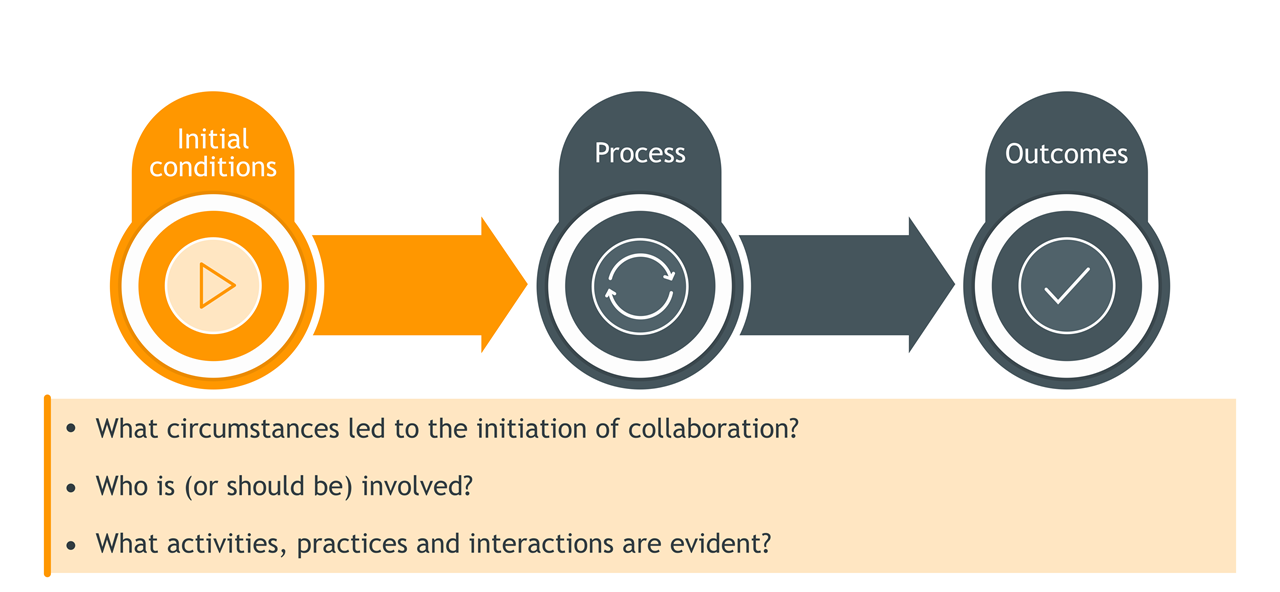Initial Conditions

While scholars have labeled it differently, there is broad agreement about collaboration involving a point of inception. Examples of this departure point include ‘antecedents’ (Selin & Chavez, 1995; Plummer et al., 2017); ‘pre-condition’ (Plummer & FitzGibbon, 2004); and ‘starting conditions’ (Ansell & Gash, 2007). In synthesizing across conceptual and empirical models of collaboration, we can discern some common guiding questions.
1. What circumstances led to the initiation of collaboration?
There are several such circumstances from which collaboration has emerged. A real or imagined crisis may precipitate actors to collaborate, such as wildfire events (Bodin & Nohrstedt, 2016) or legislative changes (Kallis et al., 2009). A new opportunity for individuals to contribute in a way not previously possible may present itself. Collaboration may be incentivized. Collaboration may itself be legally required. The spatial extent of the collaboration may be influenced by geographic space of a crisis or by political boundaries.
2. Who is (or should be) involved?
In asking this question consideration is given to different types as well as actors at different levels or jurisdictions.
3. What activities, practices and interactions are evident?
Here, attention is directed to what is occurring ‘on the ground’, the manner or way it customarily takes place, and previous interactions among actors. Leaders, existing networks and trust (or lack thereof) from may or may not exist.

